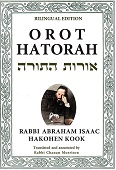
Fresh and Dried Fruits
The mitzvah of bringing the first fruits (Bikkurim) to the Temple, the spiritual focal point of the nation, contains an important message for our own service of God. The Bikkurim offering demonstrates how each individual is able to connect his private activities — the fruits of his labors — to the nation’s holiest aspirations.
The Mishnah explains how the first fruits were brought to the Temple:
“Those close to Jerusalem would bring fresh figs and grapes, while those further away would bring dried figs and raisins.” (Bikkurim 3:3)
The Mishnah describes the Bikkurim offerings of two groups of people: those who lived near to Jerusalem and could bring fresh fruits; and those who lived further away, and had to be content with bringing an offering of dried fruit that could withstand the long journey.
Two Paths: Torah and Prophecy
These two situations — living in close proximity to Jerusalem and living some distance away - correspond to two spiritual paths the Jewish people have taken throughout history: the path of Torah and the path of prophecy, each with its own advantages and benefits.
The path of Torah is paved through the development of the Oral Law, as the nation applies Halachah to all aspects of life. The fruit of these legalistic efforts, however, may seem dry and uninspiring. This is particularly true when this path is compared to that of prophecy, which deals with Divine wisdom and lofty matters, and is closely connected to meditative prayer and the Torah’s mystical teachings.
When the Jewish people lived in the Land of Israel and the Shechinah dwelled in their midst, their spiritual world centered primarily on prophetic enlightenment. We have been promised that the gift of prophecy will return to us - and on an even higher level — thus providing a lofty holiness that engages the heart and soul with knowledge of God. When we will be able to guard this gift, we will merit it once more — when we are back in our land, close to God’s Presence, and protected from the misguided beliefs of foreign nations.
However, after we were banished from our beloved homeland, it became necessary to take the second path - a path capable of retaining its special character, despite exile and dispersion. This is the path of Torah, as the Sages wrote: ‘From the day the Temple was destroyed, the Holy One has only the four cubits of Halachah in His world’ (Berachot 8a). The legal system of Halachah may appear to be dry and barren; but like the dried fruits of the Bikkurim offering, it contains hidden reserves of spiritual life and vitality. It is this path of Torah that preserved the Jewish people throughout the difficult challenges of a long and bitter exile.
Complementary Paths
The switch between the path of prophecy and the path of Torah took place during the Second Temple period, when prophecy ceased. In preparation for the exile that would follow, those spiritual forces of the nation that had previously focused on prophecy now concentrated their talents on the discipline of Halachah, developing and refining the study of Torah. These efforts enabled the Jewish people to survive as a separate nation in foreign lands, distinguished from other nations by an all-encompassing Halachic lifestyle.
These two paths are reflected in the paradigm of the Bikkurim offerings. Those close to the spiritual center prefer the delicious fresh fruits. However, the gifts from those living far away — dried figs and raisins that may appear to be shriveled and lifeless, but have the advantage of retaining their flavor despite the long journey — are also valued and beloved. Together, the two conduits of Torah and prophecy provide endurance and vitality for the nation’s special service of God.
(Sapphire from the Land of Israel. Adapted from Ein Eyah vol. II, p. 412)





